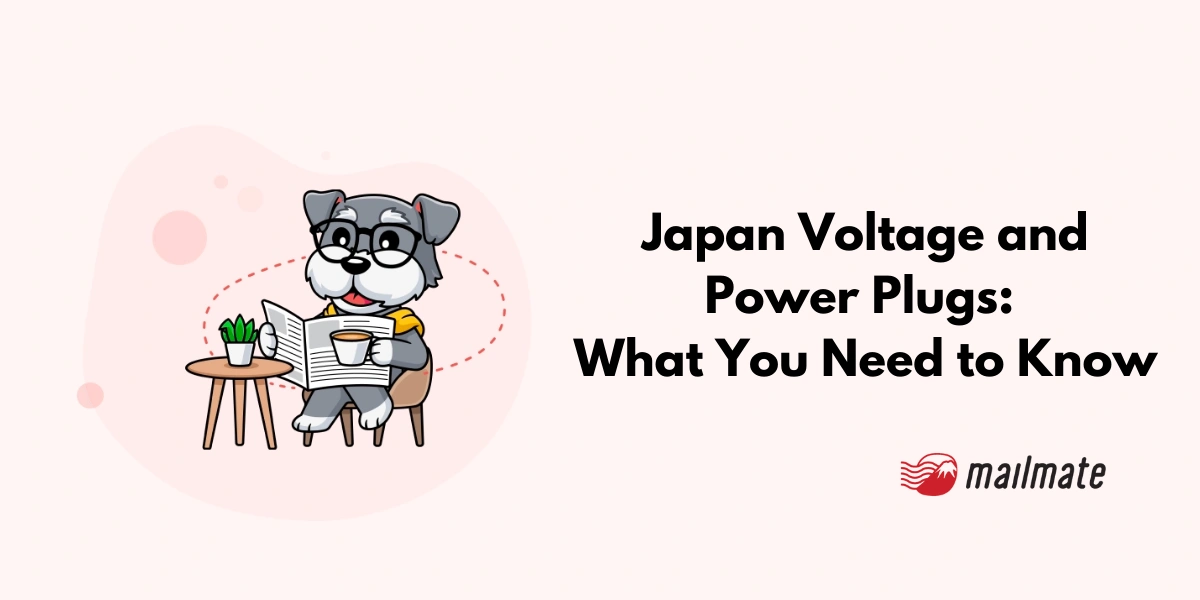Japan Voltage and Power Plugs: What You Need to Know

Moving to Japan? Or just visiting? Understanding the country's electricity system is important for your appliances and electronic devices to work properly.
This Japan voltage guide is here to help you understand Japan's voltage and plug types.
Japan’s electrical system
Voltage in Japan
Japan's standard voltage is 100 volts (100V), which is lower than other countries. In the US, it's usually 120V, while in Europe, it is 220-240V.
The difference in voltages might cause some applicants who need higher voltages, such as hair dryers and irons, not to work. So you would need a voltage converter.
However, modern electronic appliances such as laptops and phone chargers with dual voltage capability (100-240V) can be used in Japan with a plug adapter.
Frequency in Japan

Japan has two different frequencies:
50Hz in eastern Japan, including Tokyo
60 Hz in western Japan, including Osaka and Kyoto
The electric frequency split dates back to when generators from the US (60Hz) and Germany (50Hz) were imported in the late 1800s, which expanded their grids accordingly.
Despite the differences, it does not affect more appliances. For example, if you bought a rice cooker in Tokyo, it'll still work in Osaka.
Outlet and plugs in Japan

Electrical plugs and outlets in Japan are type A, two flat parallel prongs. This type is used in the U.S., Canada, and Mexico.
However, Japanese plugs are not polarized or grounded, so you won't find any with a third pin. So, most North American plugs fit into Japanese outlets, and your machine will operate normally.
A universal plug adapter is best recommended if you have any Type B plug or others.
Appliances that can not be used with different frequencies
Depending on the electrical appliances, they may not function properly because of the difference in frequency.
Bringing your laptop, phone chargers, and electric razors should be fine in Japan. However, items that generate heat or have motors may perform weaker.
Because of the difference in frequencies in Japan, certain items can and can not be used:
Can be used in either area: TV and radio
Can be used, but with reduced efficiency: Refrigerators, electric fans, air-conditioners
Can not be used at a different frequency area: Washing and dryer machines, microwave ovens, and fluorescent lights.
Frequently asked questions
Is Japan 110V or 220V?
In Japan, it is about 100V.
Are the US and Japan voltages the same?
US and Japan have similar voltages, 120V, and 100V, respectively. Despite the similar voltage, some appliances may not perform effectively.
Do I need to bring a voltage converter to Japan?
If your appliance has a 100-240V range, you do not need a voltage converter in Japan.
Can I use a 120V appliance in Japan?
If your appliance has a "100-240V" range, it will be all right to use in Japan.
In closing
In Japan, electricity runs at a different voltage and frequency compared to other countries. If you plan on buying Japanese electronics here, you do not need to worry about whether they will work properly.
Spending too long figuring out your Japanese mail?
Virtual mail + translation services start at 3800 per month. 30-day money-back guarantee.

